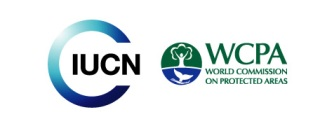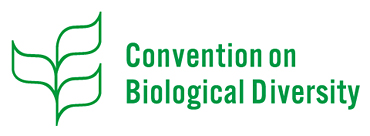Negative Impacts of Tourism
Chapter editor: Glen Hvenegaard
Chapter contributors:: Glen Hvenegaard, Anna Spenceley, Ralf Buckley and Lincoln Larson
Chapter 5 Table of Contents
5.1 Introduction
5.2 Impacts on Biophysical Attributes
- 5.2.1 Types of Activities and their Negative Impacts
- 5.2.2 Assessing the Significance of Impacts
- 5.2.3 Implications
5.3 Impacts on Communities
- 5.3.1 Types of Activities and their Impacts
- 5.3.2 Assessing the Significance of Impacts
- 5.3.3 Implications
5.4 Conclusions and Recommendations
References
- Affeld, D. (1975). Social aspects of the development of tourism, In United Nations, Planning and development of the tourist industry in the ECE region, United Nations, New York, 109-15.
- Anderson, S. H. (1995). Recreational disturbance and wildlife populations. In Knight, R. L. and Gutzwiller, K. J. (eds.). 1995. Wildlife and Recreationists: Coexistence Through Management and Research. Island Press, Washington, DC. 372 pp.
- Ap, J., and Crompton, J. L. (1998). Developing and testing a tourism impact scale, Journal of Travel Research, 37 (2), 120-130.
- Archer, B. (1996). Sustainable tourism – Do economists really care? Progress in Tourism and Hospitality Research, 2, 217-259.
- Armour, A. (1988). Methodological problems in social impact assessment, Environmental Impact Assessment Review, 8 (3), 249-65.
- Ashley, C. and Roe, D. (1998). Enhancing community involvement in wildlife tourism: issues and challenges. IIED Wildlife and Development Series No. 11, International Institute for Environment and Development.
- Ashley, C., Boyd, C., and Goodwin, H. (2000). Pro-poor tourism: putting poverty at the heart of the tourism agenda, Natural Resource Perspectives No. 51, Overseas Development Institute, March 2000. Online Resource
- Bagri, A., and Vorhies, F. (1997). Biodiversity and Impact assessment. IUCN, Gland, Switzerland. Online Resource
- Bagri, A., McNeely, J., and Vorhies, F. (1998). Biodiversity and Impact assessment. Paper presented at IUCN workshop on Biodiversity and Impact Assessment, Christchurch, New Zealand 21-22 April 1998.
- Barrow, E. and Murphree, M. (2001). Community Conservation: From concept to practice. In Hulme, D. and Murphree, M. (eds.) African wildlife and livelihoods: The promise and performance of community conservation, James Currey Ltd.
- Beanlands, G. E. and Duinker, P. N. (1984). An ecological framework for environmental impact assessment. Journal of Environmental Management, 18, 267-277.
- Bernard, J. (1973). The sociology of community, In Reiss Jr J. and Wilensky H. L. (eds.) Introduction to Modern Society Series, Scott, Foresman and Co., Glenview.
- Bowles, A. E. (1995). Responses of wildlife to noise, In Knight, R. L. and Gutzwiller, K. J. (eds.) 1995. Wildlife and Recreationists: Coexistence Through Management and Research. Island Press, Washington, DC. 372 pp.
- Bryant, R. L. (1992). Political ecology: an emerging research agenda in third world studies, Political Geography, 11 (2), 12-36.
- Buckley, R.C. (ed) (2004). Environmental Impacts of Ecotourism. CAB International, Wallingford. 389 pp.
- Buckley, R.C. (2009). Ecotourism: Principles and Practices. CAB International, Wallingford. 368 pp.
- Buckley, R.C. (2011). Tourism and environment. Annual Review of Environment and Resources 36: 397-416.
- Buckley, R.C. (2012). Sustainable tourism: research and reality. Annals of Tourism Research 39(2): 528-546.
- Budowski, G. (1976). Tourism and Environmental Conservation: Conflict, Coexistence, or Symbiosis? Environmental Conservation, 3 (1): 27-31.
- Burdge, R. J. and Vanclay, F. (1995). Social impact assessment. In Vanclay, F. and Bronstein, D. A (eds.) Environment and Social impact assessment, John Wiley and Sons Ltd.
- Burton, F. (1998). Tourism development on the rampage – the Cayman Islands, ECOS, 19 (1), 15-19.
- Ceballos-Lascuráin, H. (1996). Tourism, ecotourism and protected areas: The state of nature-based tourism around the world and guidelines for its development. IUCN, Gland, Switzerland, and Cambridge UK.
- Cole, D. N. and Landres, P. B. (1995). Indirect effects of recreationists on wildlife, In Knight, R. L. and Gutzwiller, K. J. (eds.) 1995. Wildlife and Recreationists: Coexistence Through Management and Research. Island Press, Washington, DC. 372 pp.
- Collyns, D. (2007, February 1). Bridge stirs the waters in Machu Picchu. BBC News. Retrieved from: http://news.bbc.co.uk/2/hi/americas/6292327.stm
- Connor, D. M. (1998). Participative social impact assessment and management cross-cultural application. Impact Assessment and Project Appraisal, 16 (1), 65-69.
- de Kadt, E. (1979). Tourism: passport to development. Oxford University Press, London.
- Dee, N., Baker, J., Drobny, N., Duke, E., and Fahringer, D. (1972). Environmental evaluation system for water resource planning. Batelle Columbus Laboratories, Columbus, Ohio, 1-189.
- Deery, M., Jago, L., and Fredline, L. (2012). Rethinking social impacts of tourism research: a new research agenda. Tourism Management, 33, 64-73.
- Diaz, D. (2001). The Viability and Sustainability of International Tourism in Developing Countries. Report to the Symposium on Tourism Services, 22-23 February 2001. World Trade Organization, Geneva. Online Resource
- Esteves, A. M., Franks, D., and Vanclay, f. (2012). Social impact assessment: the state of the art. Impact Assessment and Project Appraisal 30, 34-42.
- Finsterbusch, K. (1985). State of the art in social impact assessment. Environment and Behavior, 17 (2), 193-221.
- Francis, C. D., Ortega, C. P., and Cruz, A. (2009). Noise pollution changes avian communities and species interactions. Current Biology 19(16), 1415-1419.
- Gabrielsen, G. W. and Smith, E. N. (1995). Physiological responses of wildlife to disturbance. In Knight, R. L. and Gutzwiller, K. J. (eds.) 1995. Wildlife and Recreationists: Coexistence Through Management and Research. Island Press, Washington, DC. 372 pp.
- Global Sustainable Tourism Council. (2013). GSTC Criteria for Destinations (GSTC C-D) version 1.0 November 2013, Accessed on 11 September 2014 from http://www.gstcouncil.org/sustainable-tourism-gstc-criteria/criteria-for-destinations.html
- Gutzwiller, K. J. (1995). Recreational disturbance and wildlife communities. In Knight, R. L. and Gutzwiller, K. J. (eds.) 1995. Wildlife and Recreationists: Coexistence Through Management and Research. Island Press, Washington, DC. 372 pp.
- Harrison, D. (1992). International tourism and the less developed countries: The background. In Harrison, D., (ed) International tourism and the less developed countries. London: Belhaven Press, 1-19.
- Huston, M. C. and DeSouza, G. R. (1980). SIMPACT: a system to forecast impacts of growth and development, In McDonald, J. M. (ed.) Computer Models and Forecasting Socio-economic Impacts of Growth and Development, Edmonton: University of Alberta.
- Instituto Nacional de Cultura (INC). (2005). Plan maestro del santuario historic de Machupicchu. Cusco, Peru: Instituo Nacional de Cultura, Instituo Nacional de Recursos Naturales y Direcci´on
- Jamal, T. B. and Getz, D. (1995). Collaboration theory and community tourism planning. Annals of Tourism Research, 22 (1), 186-204.
- Klein, M. L., Humphrey, S. R., and Percival, H. F. (1995). Effects of ecotourism on distribution of waterbirds in a wildlife refuge. Conservation Biology, 9 (6), 1454-1465.
- Knight, R. L. and Cole, D. N. (1995). Wildlife responses to recreationists. In Knight, R. L. and Gutzwiller, K. J. (eds.) 1995. Wildlife and Recreationists: Coexistence Through Management and Research. Island Press, Washington, DC. 372 pp.
- Knight, R. L. and Gutzwiller, K. J. (eds.) (1995). Wildlife and recreationists: Coexistence through management and research. USA: Island Press.
- Koea, A. (1977). Polynesian migration to New Zealand, In Finney, B. R. and Watson, A. (eds.). A New Kind of Sugar: Tourism in the Pacific. Centre for South Pacific Studies, University of California, Santa Cruz.
- Kozlowski, J. (1989). Integrating ecological thinking into the planning process: a comparison of the EIA and UET concepts. Paper SF-II-89-404.
- Kozlowski, J. (1993). Ultimate environmental threshold: An alternative tool for planning sustainable development. Sustainable development, 1 (1), 51-63.
- Krippendorf, J. (1987). The holiday makers; understanding the impact of leisure and travel, Heinemann, Oxford.
- LaFranchi, H. (2001). Machu Picchu’s slide. Christian Science Monitor, 93(112), 7.
- Lankford, S. V. and Howard, D. R. (1994). Developing a tourism impact attitude scale. Annals of Tourism Research, 21, 121-139.
- Larson, L. R., & Poudyal, N. C. (2012). Developing sustainable tourism through adaptive resource management: A case study of Machu Picchu, Peru. Journal of Sustainable Tourism, 20(7), 917-938.
- Liddle, M.J. (1997). Recreation Ecology. Kluwer Academic Publishers, Dordrecht.
- Lin, T.-P. (2010). Carbon dioxide emissions from transport in Taiwan’s national parks. Tourism Management, 31, 285-290.
- Mannell, R. C. (1999). Leisure experience and satisfaction. Pp. 235-252 in E.L. Jackson and T. L. Burton (eds.). Leisure Studies: Prospects for the Twenty-first Century. State College, Penn.: Venture Publishing.
- Mathieson, A., & Wall, G. (1982). Tourism: Economic, Physical and Social Impacts. London: Longman.
- McCool, S. F. (2006). Managing for visitor experiences in protected areas: Promising opportunities and fundamental challenges. Parks, 16, 2: 3-9. Online Resource
- McGowan, J.L. (2010). The sustainable livelihoods and tourism intersect: Gender, power structures and local market vendors in Aguas Calientes, Peru. Halifax, Nova Scotia: Dalhousie University.
- McGrath, G. (2004). Including the outsiders: The contribution of guides to integrated heritage of tourism management in Cusco, Southern Peru. Current Issues in Tourism, 7(4), 426–432.
- Mintel. (2001). Ethical Tourism. International Group Limited, October 2001.
- Mitchell, R.E., & Eagles, P.F.J. (2001). An integrative approach to tourism: Lessons from the Andes of Peru. Journal of Sustainable Tourism, 9(1), 4–28.
- Montgomery, D. R. (1995). Input- and output-oriented approaches to implementing ecosystem management. Environmental Management, 19 (2), 183-188.
- Monts, J. K. and Bareiss, E. R. (1979). CLIPS: Community level impacts projection system, Austin: Centre for Energy Studies, University of Texas.
- Murphy, P. E. (1985). Tourism: A community approach. New York, USA: Methuen.
- Needham, M. D., and Rollins, R. (2009). Social science, conservation, and protected areas theory. Pp. 135-167. In P. Dearden and R. Rollins (eds.). Parks and Protected Areas in Canada: Planning and Management. 3rd ed. Oxford University Press, Don Mills, ON.
- Nettekoven, L. (1979). Mechanisms of intercultural interaction, In de Kadt, E. J. Tourism: Passport to development? Perspectives on the social and cultural effects of tourism in developing countries, UNESCO- World Bank, Oxford University Press, 135-145.
- Newsome, D., Moore, S. A., & Dowling, R. K. (2012). Natural Area Tourism: Ecology, Impacts and Management (2nd Edition). Bristol, UK: Channel View Publications.
- Olsen, M. E., Melber, B. D., and Merwin, D. J. (1981). A methodology for conducting social impact assessments using quality of social life indicators. In Finsterbusch, K. and Wolf, C. P. (eds.) Methodology of social impact assessment, Stroudsburg, P. A.: Hutchinson Ross.
- Oppermann, M. and Chon, K-S. (1997). Tourism in Developing Countries. ITBP: UK.
- Parks Canada (undated) Parks Canada guiding principles and operational policies. Accessed from http://www.pc.gc.ca/docs/pc/poli/princip/sec2/part2a/part2a4.aspx on 6 April 2012.
- Parsons, D. J. and MacLeod, S. A. (1980). Measuring impacts of wilderness use, Parks, 5 (3), 8-12.
- Partidário, M. R. (2012) Strategic Environmental Assessment Better Practice Guide - Methodological guidance for strategic thinking in SEA, Portuguese Environment Agency and Redes Energéticas Nacionais (REN), SA. Online Resource
- Peterson, E. B., Chan, Y. H., Peterson, N. M., Constable, G. A., Caton, R. B., Davis, C. S., Wallace, R. R., and Yarranton, G. A. (1987). Cumulative effects assessment in Canada: An agenda for action and research. Canadian Environmental Assessment Research Council, Hull, Quebec.
- Salmon, M. (2003). Artificial night lighting and sea turtles. Biologist, 50(3): 163-168.
- Sassa, K., Fukuoka, H., Wang, F., & Wang, G. (Eds.). (2005). Landslides: Risk analysis and sustainable disaster management. Berlin: Springer.
- Saville, N. M. (2001). Practical strategies for pro-poor tourism. Case study of pro-poor tourism and SNV in Humla District, West Nepal. Pro-Poor Tourism Report, ODI, IIED, CRT. Online Resource
- Spenceley, A. (1997). Strategic environmental assessment of tourism at Hwange National Park, Zimbabwe, MSc thesis. Imperial College Centre for Environmental Technology, University of London.
- Spenceley, A. (2003). Tourism, Local Livelihoods and the Private Sector in South Africa: Case studies on the growing role of the private sector in natural resources management, Sustainable Livelihoods in South Africa Research Paper 8, Institute of Development Studies, Brighton. Online Resource
- Spenceley, A. and Casimiro, R. (2012) Tourism concessions in protected areas in Mozambique: Manual for operators and concessionaires, report to the USAID SPEED program, April 2012. Online Resource
- Sondheim, M. W. 1978. A comprehensive method for assessing environmental impact. Journal of Environmental Management, 6 (1) 27-42.
- Stauth, R., Sowman, M. and Grindley, S. (1993). The panel evaluation method: An approach to evaluating controversial resource allocation proposals. Environmental Impact Assessment Review, 13 (1), 13-35.
- Stenehjem, E. J. (1978). Summary description of SEAM: The Social and Economic assessment Model, Argonne, IL: Argonne National Laboratory.
- Stoddard, P. H. (1993). Community theory: new perspectives for the 1990s, Journal of Applied Social Sciences, 1(1), 13-29.
- Sun, D. and Liddle, M. J. (1993). A survey of trampling effects on vegetation and soil in eight tropical and subtropical sites. Environmental Management, 17 (4), 497-510.
- Sun, D. and Walsh, D. (1998). Review of studies on environmental impacts of recreation and tourism in Australia. Journal of Environmental Management, 53, 323-338.
- Therivel, R. and Thompson, S. (1996). Strategic environmental assessment and nature conservation. Report to English Nature, English Nature.
- Therivel, R., Wilson, E., Thompson, S., Heaney, D., and Pritchard, D. (1992). Strategic Environmental Assessment. London: Earthscan.
- Treweek, J. (1995). Ecological impact assessment, In Vanclay, F. and Bronstein, D. A. (eds.). Environmental and Social Impact Assessment, London: J. Wiley and Sons Ltd, 303-322.
- van den Berghe, P.L., & Flores Ochoa, J. (2000). Tourism and nativistic ideology in Cuzco, Peru. Annals of Tourism Research, 27(1), 7–26.
- Voss, J. (1984). Die Bedeutung des Tourismus fur die wirtschaftliche entwicklung, Ein beitrag zur integration von tourismus forschung und entwicklungspolitik. PhD dissertation. University of Berlin.
- Wang, C. Y. and Miko, P. S. (1997). Environmental impacts of tourism on US national parks. Journal of Travel Research, Spring 31-36.
- Yachay Wasi. (2006, May). Sacred sites and the environment from an indigenous perspective. Paper presented at the Fifth UN Permanent Forum on Indigenous Issues, New York. Retrieved from http://www.yachaywasi-ngo.org/InkaChallenge06




